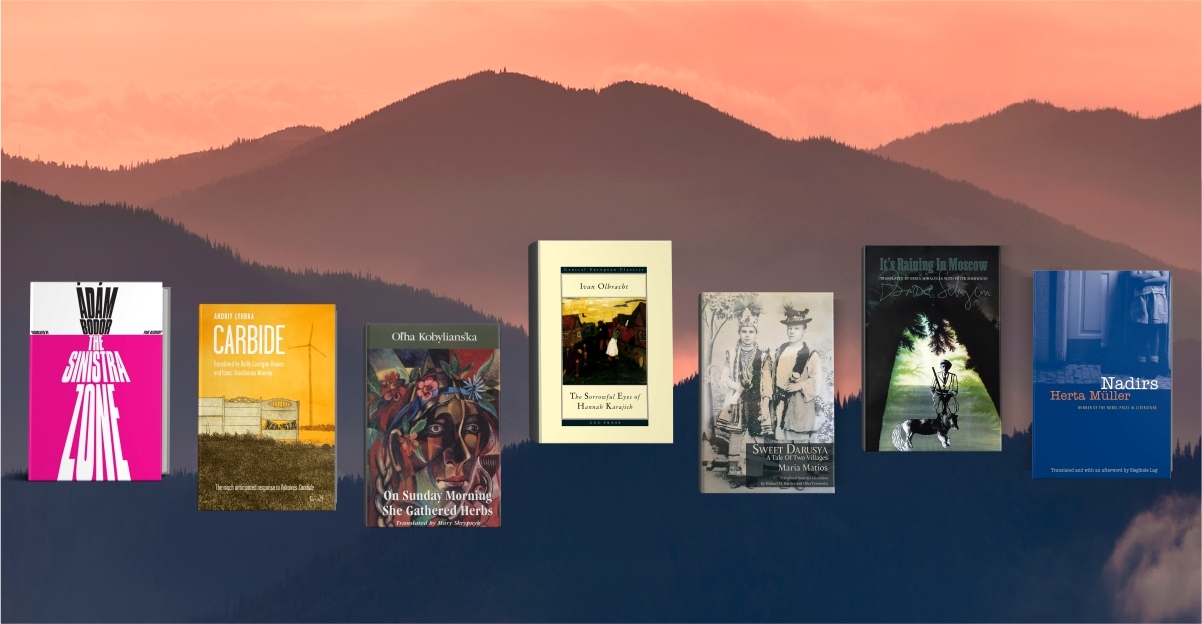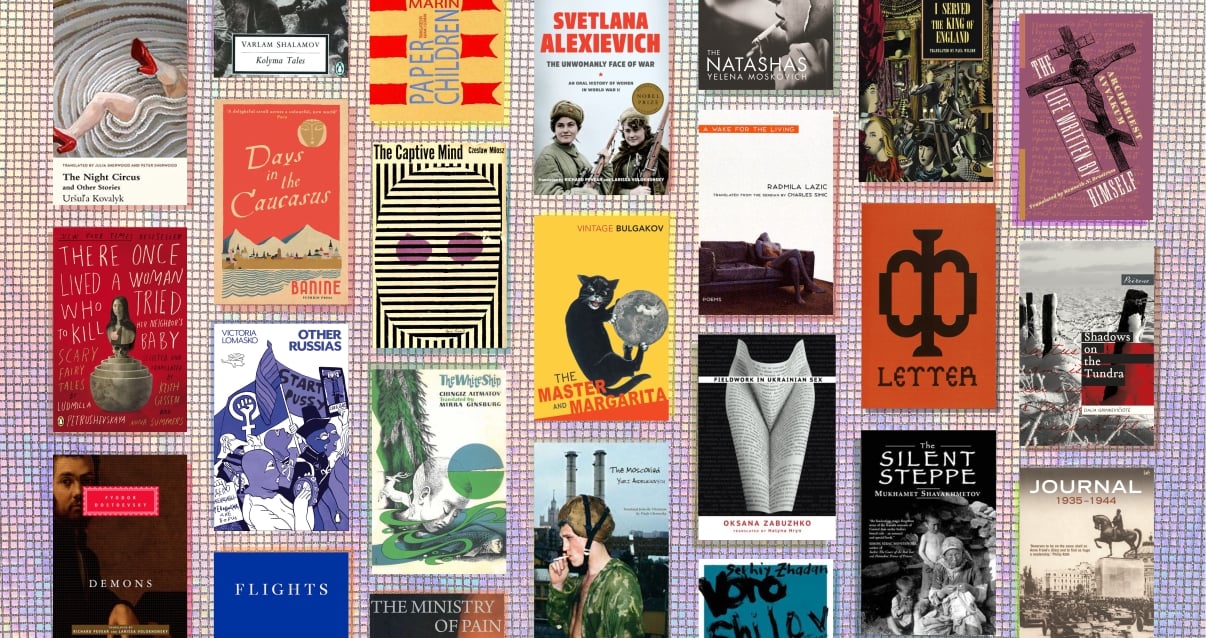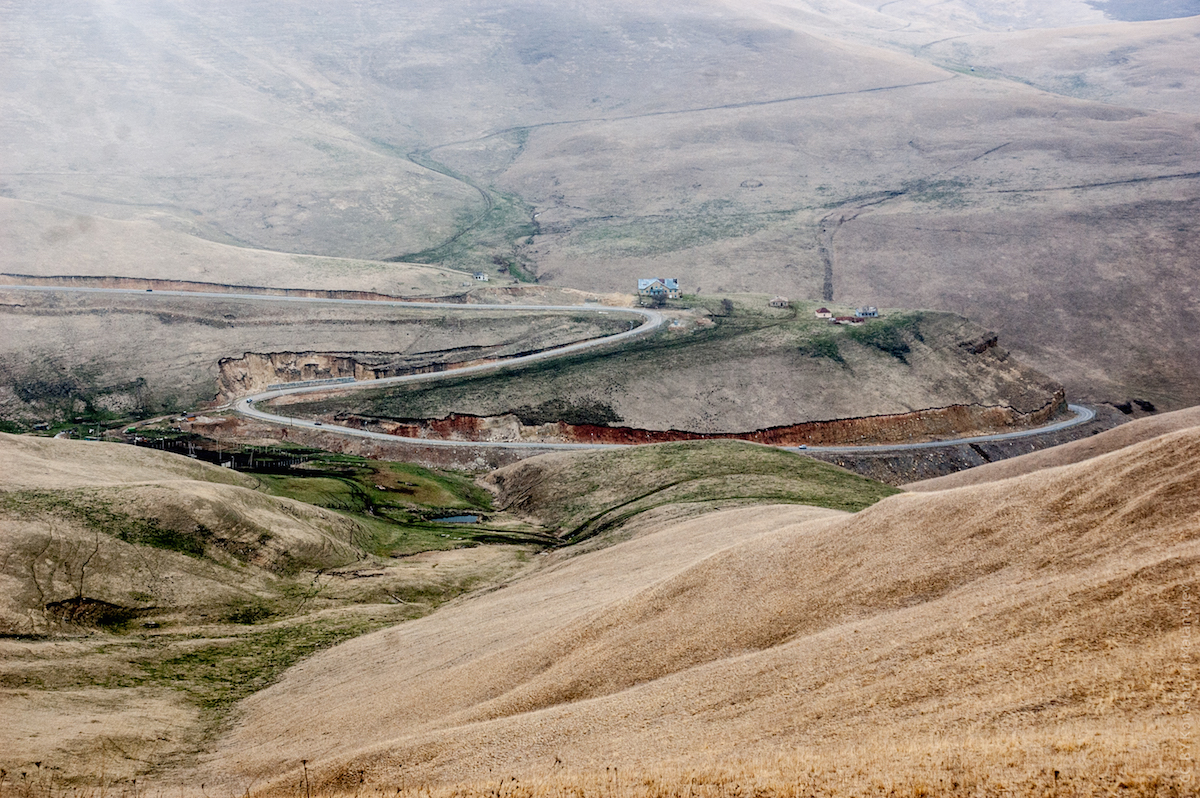9 books on the Carpathians, from political satire to mythical tales

The Carpathian Mountains have been a borderland territory for many centuries, a multilingual region that stretches from contemporary Poland and Slovakia to Ukraine, Hungary, Romania, and Serbia. Much like the Caucasus, the Carpathians have been peripheral to imperial and national projects, yet they are central to several literary traditions. Coming from national canons, books set here are rarely read together. Ranging from magical realism and satire to travelogue, here are the best modern and contemporary books set in this region to help you move beyond Bram Stoker’s Dracula and Jules Verne’s The Castle in the Carpathians.
On Sunday Morning She Gathered Herbs, by Olha Kobylianska (1908)
Translated by Mary Skrypnyk (2001)
Kobylianska, a German-speaking early feminist from Bukovyna, the borderland between today’s Ukraine and Romania, is one of the most interesting modernist Ukrainian writers. Her decision to abandon German for Ukrainian was highly unusual, and led to the development of a wholly new prose style that merges folklore with psychological realism. On Sunday Morning She Gathered Herbs is a novel written around a folk song, in which a man who loves two women at the same time is murdered by one of them. Kobylianska broadens this premise by centring the novel around Mavra, the Roma mother of the murdered man, Hryts, who herself was cast out of her community for adultery. The unlikely resonance between her and her son’s lover makes the ballad come alive, preserving its timeless, almost mythical atmosphere.
The Sorrowful Eyes of Hannah Karajich, by Ivan Olbracht (1937)
Translated by Iris Urwin Lewitová (1999)
Kobylianska is not the only author who relies on folklore in her quest to experiment with new forms of prose. Czech writer and journalist Ivan Olbracht spent the 1930s travelling in Carpathian villages, documenting the changing lives of Orthodox Jews and Ruthenian peasants under the new, Czechoslovak leadership in the region. The Sorrowful Eyes of Hannah Karajich is one of his last works, a love story between a Hasidic Jewish girl from a closed village and an atheist Zionist. With carefully drawn sociological details and a vivid portrait of Hasidic shtetl life, Olbracht examines the emotional cost of leaving close-knit communities that were soon to be wiped out by the coming war.
Sweet Darusia, by Maria Matios (2004)
Translated by Michael Naydan and Olha Tytarenko (2019)
A contemporary novel from the Ukrainian side of Bukovyna, Sweet Darusia by Maria Matios recounts a village community of Hutsuls in the 20th century through the fate of a mute woman, Darusia, and her family. The novel moves back in time, alternating between storytelling and interspersed dialogues in a floral, vivid language that is heavy with the local dialect. Darusia, who initially appears as a kind of holy fool, turns into a woman marked by trauma as the violent events of the past are sketched out: the seizures she suffers are to be linked to her all-consuming guilt over giving up her father to the NKVD in exchange for candy when she was still a child. Despite her tendency towards over-aestheticising and simplifying the moral universe of nationalist political resistance, Matios gives a chillingly accurate, nuanced portrait of a broken, proud person and the judgemental yet empathic silence the village surrounds her with.
Nadirs, by Herta Müller (1982)
Translated by Sieglinde Lug (1999)
Many books of Nobel-laureate Herta Müller are set in the Southern Carpathian Mountains, often in Banat, where the German language writer grew up, but few focus on the landscape as much as her first work, Nadirs, a collection of short stories. The book was first published in Bucharest then smuggled to Germany, where the new edition contained added stories, but removed a few more satirical pieces — fans and critics still debate which one should be the definitive edition. The stories of Nadirs are loosely autobiographical tales from a child’s perspective about a Swabian village, merging reality and dreams, ripples of state violence as filtered through the everyday lives of villagers, a world of alcoholism and poverty at once ordinary and bizarre. The stories excel in their intense, poetic language, and with their near-absent plot, they read almost like prose poems.
It’s Raining in Moscow, by Zsuzsa Selyem, (2018)
Translated by Erika Mihálycsa and Peter Sherwood (2020)
Transylvanian Hungarian Zsuzsa Selyem’s novel It’s Raining in Moscow follows the life of the author’s grandfather, an exiled landowner, through persecution to the fall of Ceaușescu’s regime, and it does so by abandoning human narrators altogether. Instead, it is through various animal perspectives that we get to piece together Beczásy’s life, perspectives that are at once anthropomorphic and profoundly alien. With this de-centred storytelling, Selyem succeeds in creating a blank page for thinking about political trauma, history, and landscape, in what feels like a wholly new chapter in Eastern European literature.
The UnSimple, by Taras Prokhasko (2002)
Translated by Uilleam Blacker (2011)
Ukrainian contemporary writer Taras Prokhasko’s enigmatic, elliptic prose follows the life and repeated rebirths of a woman called Anna, and her father-husband Sebastian. With one foot in 20th century history, the other in the suspended time of legend, the incestuous pair live a life that unfolds according to a logic of its own, in a world that seems disjointed from reality, yet profoundly shaped by it. Prokhasko describes the UnSimple as an “alternative mythology of the Carpathians”, a magical realist story that circles around the titular unsimple, a figure inspired by the molfar, the sorcerer and magic healer of Hutsul culture. Molfars are ambiguous, part god, part landscape, part human creatures: when one of them, old Beda, runs his car on a mine, he is hurt “as if the earth had split open”. These sorcerers weave human stories and tie people to places. They follow Anna, who might be one of them, sometimes appearing as spirits, and on other occasions, as people interned in a mental asylum. Prokhasko’s fragmented, oddly beautiful prose forces the reader to suspend disbelief, allowing this unlikely tale to take over entirely.
The Sinistra Zone, by Ádám Bodor (1992)
Translated by Paul Olchváry (2013)
Considered to be among the greatest books of post-1990 Hungarian fiction, Ádám Bodor’s The Sinistra Zone depicts a grotesque world based somewhere near the Ukrainian-Romanian border, in a cut-off area governed by rules of its own. The book evades labels: combining political satire with absurd fairy tale, it is a chimera that is in equal parts a collection of stories and a novel. It is difficult to pin down Bodor’s Zone on the map of the region. Here, tension seems to run in the landscape, and life unfolds in a highly organised, repressive logic: people pop up randomly, but upon arrival their past is discarded, and they live with dog tags around their neck displaying their names, every move under the eyes of the mountain infantry and its commander, “the Colonel”. The narrator arrives with the premise of looking for his adopted son, but the quest loses significance as his life is embedded ever deeper in the Zone’s closed, insane universe.
On the Road to Babadag, by Andrzej Stasiuk (2004)
Translated by Michael Kandel (2012)
Polish author Andrzej Stasiuk’s travels take him beyond the Carpathian Mountains, but it is the borderland territories of Slovakia, Poland, Ukraine, and Romania that make up the bulk of his famous travelogue, On the Road to Babadag. The book is more manifesto than conventional travel writing, a celebration of the marginal and the peripheral. Avoiding fraught exoticism, the narrative is driven by a sense that such places are shaped a lot less by the gaze and expectation of the centre. Stasiuk is interested in the power of places to free the imagination. He prefers to hover over them without staying long enough to get bogged down by their individual histories, so the book is closer to poetry than to reportage: it is a love letter to taking a look at what most would choose to glide over.
Carbide, by Andriy Lyubka (2015)
Translated by Reilly Costigan-Humes and Isaac Stackhouse Wheeler (2020)
In Ukraine’s Zakarpattia region, economic stability has been the stuff of promises and rhetoric at best. In the tradition of tragicomedy and political satire, Andriy Lyubka’s Carbide sets off with a grand promise. Tys, a drunk history teacher, decides to dig a tunnel across the border with Hungary, leading Ukraine’s people into the EU, and forcing “those hapless bureaucrats” to grant membership to the country. This hilarious, mosaic proposal is taken up by local petty criminals in a fast-paced satire, that holds a mirror to the pompousness of Ukrainian nationalist rhetoric, and the social realities of poverty, smuggling, and hopelessness in areas left on the wayside by far-away centres. Carbide is a loving yet scathing portrait of post-Maidan Ukraine, from a place rarely subjected to more than romantic projections.


